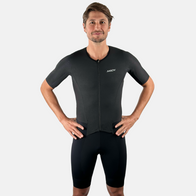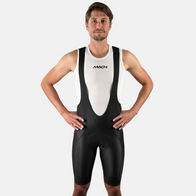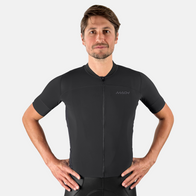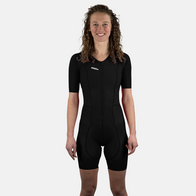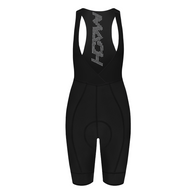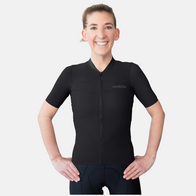
Becoming a Pro Triathlete - Do You Have What It Takes?
Pondering leaving your corporate day job to pursue a career as a professional triathlete? Qualification is just the first step of many to be a successful (and highly paid) professional in the triathlon world.
Look no further than Lucy Charles-Barclay’s pain cave and you’ll find yourself enticed by the possibility of becoming a pro triathlete. What triathlete doesn’t want to train full-time, get sweet free swag and be recognized on an international level for their hard work and success?
Hold up though - being a professional triathlete isn’t all fancy pain caves and free gear. It takes a lot of hard work on both before and after the qualification process.
So first, let’s talk about how you actually qualify. There are various avenues to qualifying for your pro license in accordance with USA Triathlon’s guidelines, including:
- Place Top 10 overall amateur at a World Championship event (ITU or Kona)
- Place Top 5 overall at USAT Age Group Nationals
- Place Top 3 overall amateur at a qualifying race*
You simply have to achieve one of these rankings one time in order to qualify for your pro license. Once you have done so, you submit your race results to USAT, pay for your license, fill out your application and BOOM! You are officially a professional triathlete. On the flipside, there are no regulations as to how many times you can achieve one of the above rankings without going pro - you can win every race you go to as an amateur and never take your pro license.
* Qualifying race is defined as any race that has a corresponding elite race with a prize purse of $20,000+
Okay, so you have your pro license. Now what?
Well, this is when the fun begins. Though you register for races as you would have as an amateur (with much lower cost of entry, that is), you are now entered into the professional class at each race, which qualifies you to make money should you place in the top eight (usually races do not pay past 8th place). The prize purse is split in half for men and women, unless there is only one gender pro field at the event, with approximately half going to the first-place finishers and tapering dramatically for places two through eight.
Then comes sponsors. Unfortunately, it’s a bit more complex than simply getting your pro license and being able to immediately gain sponsors. The key to securing sponsorships with companies is producing results as a professional triathlete, and once you have built some sponsor relationships, it is essential to continue producing results to keep them around.
And finally, in order to keep your pro license, you have to ‘re-qualify’ every three years of pro licensure. To do so, you must finish within 8% of the winner’s time at a race offering a prize purse of $5,000+.
So, while there is a lot of glitz and glam for the professional triathletes at the top of the ranks, it is certainly hard work and not a pursuit that should be taken lightly. But, as they say, with great risk comes great reward - so if you feel like you have what it takes to climb to the top of the ranks, why not go for it?





